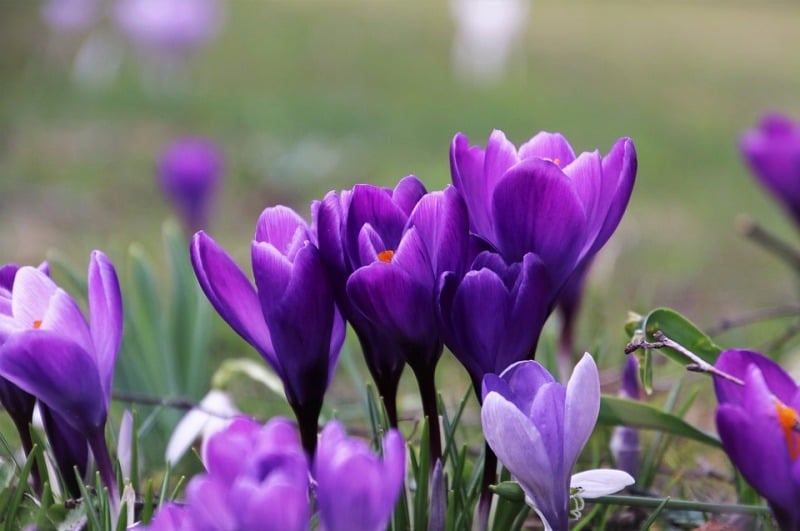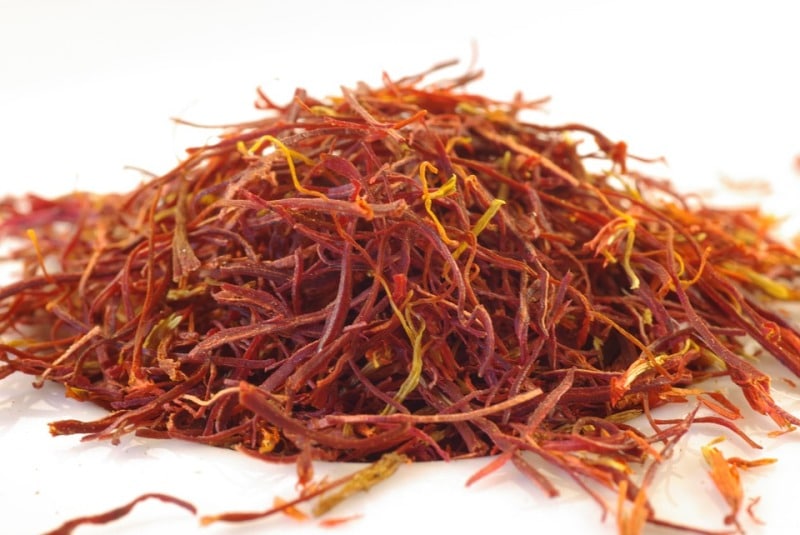A step by step guide for growing hydroponic saffron
Today, we discuss the topic of growing saffron hydroponically, hydroponic saffron plant care, hydroponic saffron bulb germination, harvesting procedure of hydroponic saffron, hydroponic nutrient solution, fertilizer for the saffron plants, and suitable hydroponic NFT (Nutrient film technique), DWC (Deepwater culture) system for growing saffron.
Hello, dear readers today we are back again with something more interesting and valuable for you. What if I say I have the formula to make you rich that too simply by gardening at your home only! The plant today we will be discussing is no less than a treasure, I hope all you are aware of the world’s most expensive spice!!
Yes, friends, we will be talking about how to grow saffron in a hydroponics system. Saffron: strands of gold a spice that costs more by weight than the gold. However, since we can’t grow gold, saffron might be the next best thing.
Growing saffron bulbs hydroponically
The saffron crocus (Crocus sativus L.) is propagated from a small rounded corm (very much similar to a bulb). Authentic Saffron spice comes from the stigma of the Saffron corm flower. The corm is basically the bulb from which the Saffron is grown it is a rounded tuber that gives rise to up to three flowers. The corms are purchased when they are in the dormant stage, and plant in late summer or early fall when they quickly burst into life with the production of small crocus flowers.
This exotic spice is the dried thread like red-gold colored stigma which is formed inside the beautiful blue/purple flower. Each flower produces on an average of three stigmas which give three strands of saffron. After flowering, the plant resumes its vegetative growth of thin, dark green strap-like leaves and then multiplies itself. It takes approximately a pound of fresh flowers to yield an ounce of stigmas. Once the stigmas are dried to produce the spice, it loses about 75 – 80% of its mass and considerable weight leaving you with very little spice, which is one very solid reason the price is so very expensive. Furthermore, in addition to its culinary uses, Saffron has also demanded it is pharmaceutical, cosmetic, and industrial applications.
You may also like Growing Stevia Hydroponically from Seed.
Saffron is a tough crop to grow and maintain but far from impossible. In fact, probably saffron spice grown hydroponically is easy to grow and maintain than it would be conventional. The bulbs or corms are the propagating material and can be easily obtained from stores for growing saffron indoors for profit as well.
When buying corms for the first time, it is important to know that like many flowering bulbs, the corms come in different size grades from very small (0.6 grams) which would be a non-flowering type requiring an extra season’s growth, to very large (24 grams).
The smaller corms are usually less expensive, but they may not produce flowers in the first season or gives a much lower yield of saffron and a lower number of daughter corms after flowering. The top planting grade for hydroponics is around 15 grams which are generally over an inch in diameter. The corms turn up dry in a dormant state ready for planting out.
In an indoor Hydroponic system, they can be planted throughout the year as you are determining and manipulating their growing environment affecting the growth of saffron even this is followed in the hydroponic flower farm.
The corms can be planted, flowered, and harvested in approximately 45-day cycles. At the completion of each cycle, you will have to start again with new corms or wait for the existing ones to go through their vegetative and dormancy phases before re-flowering and multiplying again.
The dormancy of saffron plants

The non-productive vegetative and dormancy phase takes approximately about nine months, so starting with new corms for each growth cycle is actually the most cost-effective way.
You may be interested in Growing Hydroponic Bitter Gourd from Seed.
Another option is to keep several sets of corms and their daughter corms ready; while one set is in the dormant stage the others will be producing. Dormant Corms should be stored in a dry location and planted out at the appropriate time over the winter and will sprout again in the fall. After breaking the dormancy they do need to go through their vegetative stage to gain enough energy for the production of the following season’s crop. Each healthy parent corm produces about five to ten daughter corms that can be used to give another crop in the following season.
Hydroponic setup and nutrient solution for saffron
For growing saffron in hydroponics system like NFT, DWC and pin trays are commonly used. Pin trays are principally temporary growing chambers where the plants’ roots will be growing and the bulbs are anchored. These chambers provide support while the roots are developing. Loose growing media such as Perlite, vermiculite – perlite blend, coco coir. Oasis starter cubes are used for starting bulbs. The Media must be loose enough to allow bulb and root expansion but powerful enough to support the full-grown flowering plants.
Plants that grow with Bulbs or corms; grow best with lots of phosphorus and potassium for growth and flower production. Not too much nitrogen is required. Hydroponic nutrients are not strictly necessary for germination if you choose this way; the corms/seeds should be supplied with nutrients mixed at less than half strength with water.
You may also like Growing Hydroponic Broccoli.
Some of the more adventurous growers like to dive into plant chemistry and formulate their own nutrient solutions, assuming you are prepared to deal with some plant losses while experimenting.
In the case of Saffron, the plant does not require much attention the only thing you are interested here is germination and flowering. Once the plant has flowered rest growth it is no longer of any use, the stigmas are harvested upon bloom. So the option is nutrient solution should be the one specially designed to promote flowering /blooms. So you can fetch bloom formulation from any store just make sure you do dilution as per the manufacturer’s instructions. Nutrient values should be measured at regular intervals with pH and EC meters, nutrient attributes an EC of 1.4 and pH 5.5 encourage flowering.
The temperature requirement for growing saffron hydroponically
One of the advantages of the indoor hydroponic technique is temperature can be manipulated by the grower. A range of 60 to 65 degree Fahrenheit in daytime range, with nigh-time temperature, should not be lower than 53 Fahrenheit is best for the flowering.
If it gets too warm the flower will experience flower drop and in too cold conditions plant will also get flower drop followed by dormancy. So indoor grow room, should be manipulated in such a way that it provides dry warmth of summer to induce growth, followed by damp and cooler conditions to induce flowering.
You should not miss Growing Bottle Gourd Hydroponically.
The light requirement for saffron growing hydroponically
Exposure of 14 to 16 hours of direct light per day is the optimal day length to induce flowering. Post-flowering the day length can be reduced to 12 – 14 hours a day. So make sure you install your hydroponic setup in the place where optimum light hours are met.
Flowering and harvesting saffron in hydroponics
The flowering of the corms will usually take place quite quickly after planting; within a few weeks, the first emerging flower buds can be seen. The flowers will completely open within three to five days and will be ready for harvest. As each flower blooms, it should be plucked or snipped from the plant and taken away for further processing.
Inside the flower there will be two or three thin dark red coloured thread like a stigma which are the economic part of the plant and forms the saffron spice when dried; there will also be three, shorter, wider, golden-colored anthers which usually bear pollen on their surface these are not element of the spice and should be discarded. The simplest way of removing the saffron stigmas from the center of the flower is to pull back and remove all the petals and then clip the red strands at the base. These will then require to be dried before storage.

Saffron is very delicate and the strands should be placed carefully on white paper and allowed to air dry and fully desiccate. Any slight breeze can easily blow not only the strands but your efforts too. Being small and very light, the saffron dries within a week in most cases and can then be stored in airtight glass jars for better storage. A small pack of silicon desiccant can be used to make ensure that any additional moisture on the strands or air does not cause any storage problems. Inadequately dried saffron invites mold, fungi, so supplementary air-drying time is recommended if the humidity levels are high.
That’s all folks about growing saffron hydroponically along with its cultivation practices without soil.
You may also check the Sweet Potato Cultivation Income, Profit, Project Report.
Hi where can i get the saffron bulbs to grow at my home.
please guide me.
Thanks
Dayananda
+91 9620472963
Hey you can get bulbs from leading sites dealing with horticultural stuff you can try Amazon long back I saw bulbs there moreover you can contact nearby Krishi vigyan Kendra for assistance.
Goodluck
Happy gardening
Keep reading us we have a lot to offer. 🙂
Hi
I want to experiment to see what quality the Saffon whill have if grown in hydrophonic .
Any idea how can i bipass the dormacy phase ,i mean after harwest can i remove bulbs and store them for 9 months whitout moving the bulbs in a soil bed ?
I hope to hear back from you
Thank you
Can I grow each saffron bulb hydroponically indoor in a single vase? I read that timer vase is better.